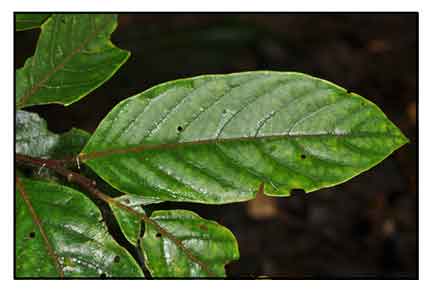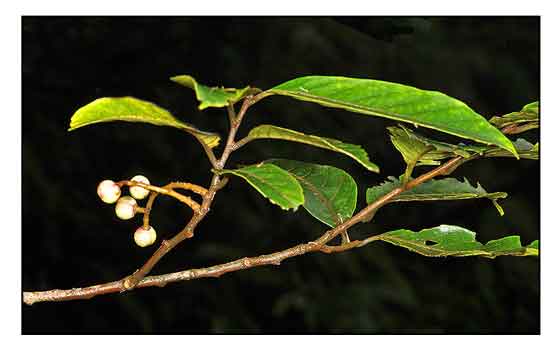
Family • Rosaceae
Lago
Prunus grisea (Blume ex Müll.Berol.) Kalkman
TANGA-TANGA
| Scientific names | Common names |
| Prunus grisea (Blume ex Müll.Berol) Kalkman | Amatogan (Phil.) |
| Prunus griseum Blume ex Müll.Berol | Amongyang (Phil.) |
| Accepted infraspecifics | Lago (Tag.) |
| Prunus grisea var. grisea | Tanga-tanga (Tag.) |
| Prunus grisea var. microphylla Kalkman | |
| Prunus grisea var. tomentosa (Koord. & Valeton) Kalkman | |
| Prunus grisea (Blume ex Müll.Berol) Kalkman is accepted. KEW: Plants of the World Online | |
| Taxonomy: Other dedicated Plant Sites provide different and more extensive list of synonyms: ICRF, WFO, Plant List. | |
| Other vernacular names |
| THAILAND: Nut ton. |
November 2022
![]()
 |
| PHOTOS / ILLUSTRATIONS |
| IMAGE SOURCE: Photo : Rosaceae: Prunus grisea / Infructescence / click on image to go to source page / Copyright © 2012 by P.B. Pelser & J.F. Barcelona (contact: [email protected])) [ref. DOL112844] / Non-Commercial Use / Phytoimages.siu.edu |
| OTHER IMAGE SOURCE: Photo : Rosaceae: Prunus grisea / Fruiting twig / click on image to go to source page / Copyright © 2012 by P.B. Pelser & J.F. Barcelona (contact: [email protected])) [ref. DOL114792] / Non-Commercial Use / Phytoimages.siu.edu |
| OTHER IMAGE SOURCE: Photo : Rosaceae: Prunus grisea / Leaf / click on image to go to source page / Copyright © 2012 by P.B. Pelser & J.F. Barcelona (contact: [email protected])) [ref. DOL114805] / Non-Commercial Use / Phytoimages.siu.edu |
Additional
Sources and Suggested Readings |
• |
DOI: It is not uncommon for links on studies/sources to change. Copying and pasting the information on the search window or using the DOI (if available) will often redirect to the new link page. (Citing and Using a (DOI) Digital Object Identifier) |
| List of Understudied Philippine Medicinal Plants |
• |
 |




